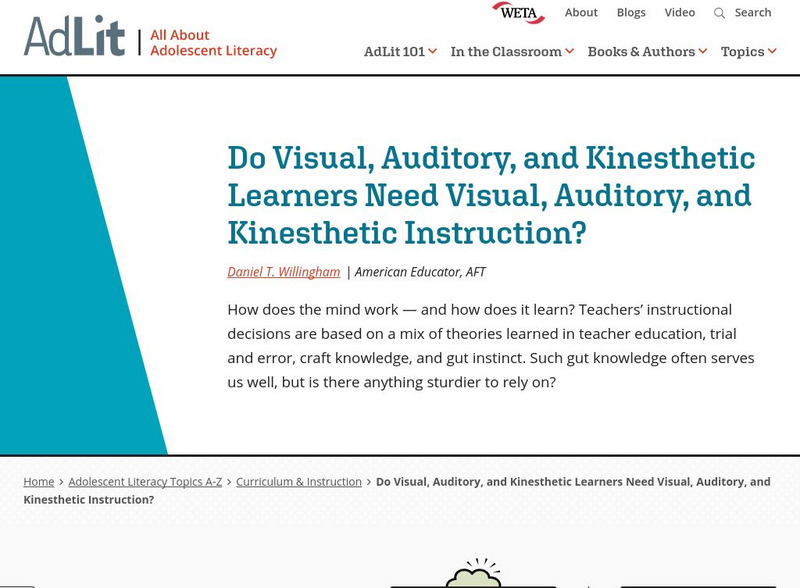Hi, what do you want to do?
Curated OER
Narrative Techniques: Plot Lines
Eighth graders develop plot lines as a part of narrative writing process. In this plot lines lesson, 8th graders work in learning groups to create a plot line for a piece of literature they've read. Students discuss the general plot and...
Curated OER
Investigating Volume
Ninth graders investigate and make conjectures about volume. In this geometry lesson, 9th graders analyze data and predict the outcome. They calculate volume using different tiers.
Curated OER
Science
Seventh graders study the theory of plate tectonics. In this activity lesson students complete an activity to determine how seafloor spreading and volcanoes contribute to solving the plate tectonics...
Curated OER
This is Effective
Fourth graders discuss the concept of cause and effect. They write a cause and effect statement involving a physical activity.
Curated OER
Disappearing Magic Factors
Students identify, through the number of rows and columns, the factors related to the product. In turn, they also discover how to find the missing factor, which is part of the fact family for that product.
Curated OER
The Laughing Leaf
Students demonstrate real-object writing. They discuss a leaf that has human attributes, and using a real leaf write a story about a leaf that tells them a joke, and create an illustration of themselves and their leaf.
Curated OER
ESL Activity - Authentic Cooking Experience
Students encounter imperatives used for the instructions for this cooking experience. They review selected vocabulary terms for food and the process of cooking. Students identify adverbs of sequence (first, then, etc.). They follow the...
Curated OER
Stories Behind Pacific Northwest First Nations' Images
Students investigate Canadian culture by examining mascots of the 2010 Olympics. In this Canadian history lesson, students read a Vancouver Olympics guide to identify three Canadian mascots and their importance to the First Nations...
Curated OER
Governance
Students explore government by researching Native American history. In this First Nations culture lesson, students define the Aboriginal action of speaking in a circle as a group. Students discuss their likes and dislikes with the class...
Curated OER
How Do I Learn Best?
Young scholars discover their learning styles. In this language arts lesson plan, students read about the various learning styles. Young scholars determine their learning style and discuss how they can use this knowledge.
Curated OER
The Envelope Please
Pupils examine and research the importance and functions of the skeletal system in vertebrates. They construct a 10-foot geodesic dome to illustrate the importance of architectural frameworks and create a clay animation movie.
Curated OER
Piggies
First graders listen to the book, Piggies, and act out the events of the story with premade puffball pigs.
Curated OER
Household Chemicals & the Environment
High schoolers conduct a laboratory experiment designed to investigate the effects of chemicals, soil quality and pollution on seed growth and plant yield. They consider how best to maximize agriculture in the long term.
Curated OER
I've Got the Blues!
Students identify the musical form of the 12-bar blues. They identify a problem from the "Farming in the 1940's" section and compose a 12-bar blues song. make comparisons between problems of the 1940's and today.
Nazareth College
Cooperation and Conflict Resolution
Fourth graders participate in a variety of activities designed to promote cooperation and positive conflict resolution. In cooperative groups, they create a comic strip or poster, play cooperative musical chairs, write a journal entry...
Curated OER
Where Did the Science Experiments Go?
Hands-on science experiments are essential for student learning.
Curated OER
Nature Notes
High schoolers spend some time outdoors and record their observations of abiotic conditions, geologic surroundings and living organisms. They reflect and write about the experience of being observant in nature.
Other
Ld Pride: Learning Styles Explained
This resource helps explain the different styles of learning. Also includes tests to see what kind of a learner you are.
Other
University of South Dakota: What Is Your Learning Style?
Find out what learning style you have by taking this interactive quiz. After taking the quiz, read and understand more about the three major learning styles: visual, auditory, and kinesthetic.
Other
Alphabet Sound Recognition With Motions
A fun activity for kinesthetic learners! Students learn motions to go along with letter sounds. This site includes a link to a building fluency site.
SMART Technologies
Smart: Area of a Triangle
This SMART whiteboard activity will help students learn the formula for finding the area of a triangle. Students will practice what they have learned by using examples created for visual and kinesthetic learners.
SMART Technologies
Smart: Exploring Explorers
This is a lesson activity which is written to engage visual and kinesthetic learners in their study on explorers: Leif Eriksson, Christopher Columbus, Erik the Red, Vasco Da Gama, John Cabot, Marco Polo, and Ferdinand Magellan.
Other
Ld Pride: Learning Styles Explained
LdPride.net offers resources that explain the different styles of learning. Tests can also be found on this site that helps determine which intelligence you favor most.
AdLit
Ad lit.org: Do Learner Types Need in Style Instruction?
How does the mind work - and how does it learn? Teachers' instructional decisions are based on a mix of theories learned in teacher education, trial and error, craft knowledge, and gut instinct. Such gut knowledge often serves us well,...

























